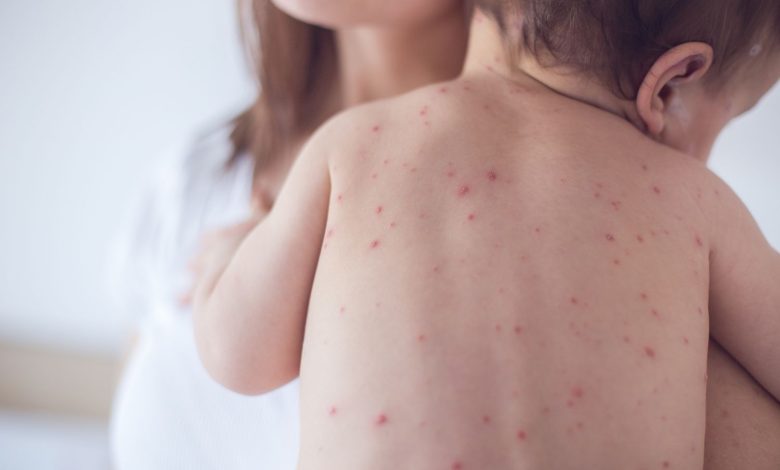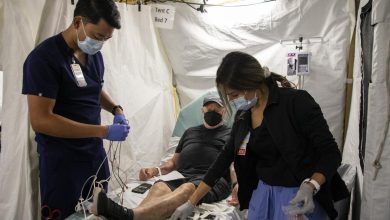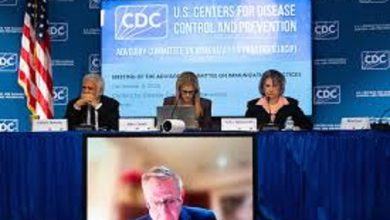Eight New Measles Infections Detected, Spartanburg County on Alert

Spartanburg County, South Carolina — Health authorities are urging vigilance as eight new measles cases have been confirmed in Spartanburg County, triggering heightened public health alerts and community concern. The outbreak, which health officials link to declining vaccination rates and increased travel exposure, marks the region’s most significant measles surge in over a decade.
Understanding the Outbreak: How It Began
The South Carolina Department of Health and Environmental Control (DHEC) confirmed the first two measles cases earlier this month, both in unvaccinated individuals who had recently returned from international travel. Within days, contact tracing revealed six additional infections, most among family members and close community contacts.
Officials believe the virus spread through casual contact in local public spaces, including a grocery store, church, and a pediatric clinic. The patients are now isolated, and health professionals are monitoring more than 50 potential contacts for early symptoms.
Dr. Karen Mitchell, an infectious disease specialist at Spartanburg Regional Healthcare System, warned that “measles spreads extraordinarily fast — one infected person can expose up to 90% of unvaccinated people around them. Even brief encounters in shared airspace can result in infection.”
Measles: A Dangerous and Highly Contagious Virus
Measles, once declared eliminated from the United States in 2000, has been making a troubling comeback in recent years. The disease is caused by the measles virus (rubeola), a pathogen that spreads through respiratory droplets when an infected person coughs or sneezes.
Symptoms typically begin 7–14 days after exposure and include:
- High fever
- Cough and runny nose
- Red, watery eyes
- A distinctive red rash that usually starts on the face before spreading downward
While measles may seem mild at first, it can lead to serious complications, especially in children, pregnant women, and immunocompromised individuals. These complications include pneumonia, brain inflammation (encephalitis), and even death.
Dr. Mitchell added, “People underestimate measles. It’s not just a childhood rash — it’s a dangerous, sometimes deadly disease. The best protection we have is vaccination.”
The Role of Vaccination: Why Measles Is Resurging
Public health officials emphasize that nearly all measles outbreaks in the United States originate in communities with low vaccination rates. The Measles, Mumps, and Rubella (MMR) vaccine — administered in two doses — is about 97% effective in preventing infection.
However, in Spartanburg County, vaccination coverage has declined in recent years. According to DHEC data, MMR coverage among kindergarteners has dropped from 95% in 2018 to around 89% in 2024 — below the 93–95% threshold needed for herd immunity.
This downward trend mirrors a national pattern driven by vaccine misinformation, complacency, and the lingering effects of the COVID-19 pandemic, which disrupted routine childhood immunizations.
Dr. Lisa Pruitt, Director of the DHEC Immunization Program, explained, “Even a small dip in vaccination rates creates gaps in community immunity. That’s all measles needs to reestablish itself.”
Schools and Childcare Centers on Alert
In response to the outbreak, local schools and childcare centers have implemented strict preventive measures. Unvaccinated students who may have been exposed to the virus are being temporarily excluded from attendance until they receive vaccination or the incubation period ends.
The Spartanburg County School District released a statement:
“Our priority is the health and safety of our students. We are cooperating closely with DHEC to identify potential exposures, verify immunization records, and provide guidance to families.”
Parents have been urged to check their children’s vaccination status immediately. Health clinics across the county have reported a sharp increase in requests for MMR shots in the past week.
Community Reaction: Concern and Confusion
The outbreak has sparked both anxiety and frustration among residents. Many parents, particularly those with infants too young to be vaccinated, are concerned about public exposure.
“I have a 9-month-old, and she’s not old enough for her first measles shot yet,” said local resident Jessica Warren. “We’ve stopped taking her to daycare until we know it’s safe. It’s terrifying to think something so preventable is back in our community.”
Meanwhile, misinformation on social media has added to the confusion. Some posts falsely claim that the outbreak is linked to recent migrants or that the vaccine itself causes illness — claims public health officials firmly refute.
Dr. Pruitt responded, “There is no evidence linking measles outbreaks to immigration or vaccine side effects. The truth is simple: measles spreads where vaccination rates drop.”
DHEC’s Emergency Response
To contain the outbreak, DHEC has launched an extensive public health response that includes:
- Free vaccination clinics throughout Spartanburg County
- Expanded testing for suspected measles cases
- Community alerts advising residents about possible exposure sites
- Healthcare provider training to identify and report symptoms quickly
DHEC’s mobile health units have been deployed to rural and underserved areas to reach families with limited access to healthcare. In addition, local hospitals are required to immediately report any suspected measles cases for rapid laboratory confirmation.
Dr. Mitchell praised the coordinated effort: “The response has been swift and thorough. Early identification and isolation are key to preventing a wider outbreak.”
Where Exposure May Have Occurred
Health authorities have listed several potential exposure sites during the infectious period of the confirmed patients. Anyone who visited the following locations should monitor for symptoms and contact their healthcare provider if they develop a fever or rash:
- Spartanburg Regional Outpatient Center, Oct. 12–15
- Mary’s Community Church, Oct. 13 (10 a.m. service)
- Publix Grocery, East Main Street, Oct. 14 (4–6 p.m.)
- Local pediatric clinic, Oct. 15 (9 a.m.–noon)
DHEC advises that individuals who are fully vaccinated with two doses of the MMR vaccine have strong protection and are unlikely to become infected. However, those unsure of their immunization status should contact their doctor for verification or a booster dose.
What Residents Should Do
Public health officials stress several immediate actions for residents:
- Check your vaccination status.
If you or your child are not fully vaccinated with two doses of MMR, get vaccinated immediately. The vaccine is available at DHEC clinics, pharmacies, and local healthcare providers. - Monitor for symptoms.
Watch for fever, cough, runny nose, red eyes, and rash — especially if you visited the exposure sites or have been in contact with infected individuals. - Stay home if you are sick.
To prevent spreading infection, avoid public places and call your healthcare provider before visiting in person. - Inform schools and workplaces.
If you suspect measles exposure, notify relevant authorities to prevent further transmission. - Don’t fall for misinformation.
Rely on trusted sources such as the CDC, WHO, or local health departments for accurate updates.
The Larger Picture: U.S. Measles Cases on the Rise
Spartanburg County’s situation reflects a troubling national trend. In 2025, the Centers for Disease Control and Prevention (CDC) has reported over 400 measles cases across 18 states — the highest number since 2019. Most outbreaks have occurred in communities with low vaccination rates.
Dr. Rochelle Walensky, former CDC director, noted, “Measles is a warning signal. It tells us where the walls of immunity are cracking. The virus exploits every gap we leave open.”
International travel remains a major contributing factor. Many U.S. outbreaks begin when unvaccinated travelers are exposed abroad — particularly in regions of Africa, Europe, and Asia where measles remains endemic — and then return home before symptoms appear.
The Science of Protection: How the MMR Vaccine Works
The MMR vaccine trains the immune system to recognize and fight the measles, mumps, and rubella viruses. It contains weakened forms of the viruses that trigger protective antibodies without causing disease.
Typically, the first dose is given between 12–15 months of age, and a second dose follows between ages 4–6. Adults who missed vaccination in childhood or are unsure of their immunity can receive catch-up doses at any age.
The vaccine’s safety record is robust. Over decades of use, millions of doses have been administered worldwide with extremely rare serious side effects. Common mild reactions may include temporary soreness or low fever.
“Getting vaccinated not only protects you but also those around you — especially babies, the elderly, and people with weakened immune systems who can’t get the vaccine themselves,” said Dr. Pruitt.
A Call to Action: Restoring Trust in Public Health
The Spartanburg outbreak underscores the urgent need to rebuild trust in vaccines and science-based public health guidance.
Public health advocates argue that addressing misinformation requires more than fact-checking — it demands empathy and clear communication.
“People don’t respond to fear; they respond to understanding,” said Dr. Mitchell. “We must explain how vaccines work, listen to concerns, and share real stories of families affected by preventable diseases.”
Local health campaigns are now focusing on storytelling — featuring survivors, healthcare workers, and parents who have witnessed the devastating impact of vaccine-preventable illnesses.
Lessons from History: When Measles Was Widespread
Before the measles vaccine became widely available in 1963, the virus infected 3–4 million Americans every year, hospitalizing tens of thousands and killing around 500 annually. The introduction of routine immunization programs nearly eradicated the disease from the U.S. by 2000.
However, the virus has proven resilient. Global travel, vaccine hesitancy, and complacency have allowed it to regain ground.
As Dr. Mitchell warned, “Measles doesn’t respect borders or opinions. Until vaccination rates remain high everywhere, no community is truly safe.”
Hope for Containment
Despite growing concern, DHEC remains optimistic that the Spartanburg outbreak can be contained through aggressive vaccination and public cooperation.
As of this week, more than 2,000 residents have received MMR shots at emergency clinics. No new cases have been reported in the past three days — an encouraging sign that the containment measures are working.
Health officials continue to urge calm but caution: the incubation period for measles can extend up to 21 days, so new cases could still emerge in the coming weeks.
The Takeaway: Prevention Is Still the Best Defense
The Spartanburg measles outbreak serves as a stark reminder of what happens when vaccine coverage falters. Measles, a disease once relegated to the history books, can reappear with alarming speed.
Experts agree on one message above all: Vaccination saves lives.
“Every shot is a shield — for you, your children, and your community,” said Dr. Pruitt. “If we want to stop measles, we already have the tools. We just need to use them.”
Final Thoughts
The eight new measles infections in Spartanburg County highlight both the fragility and the power of public health systems. When vaccination rates dip, diseases return. But when communities unite behind science and prevention, even the most contagious viruses can be stopped in their tracks.
As South Carolina works to contain this outbreak, the message resonates far beyond county lines: measles anywhere is a threat everywhere — and vigilance, vaccination, and trust in science remain our strongest defense.




